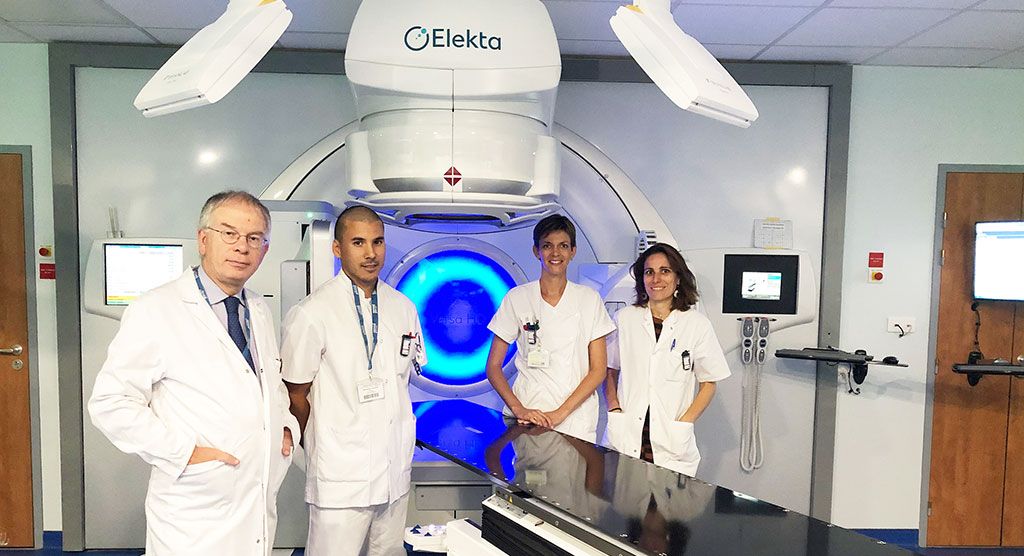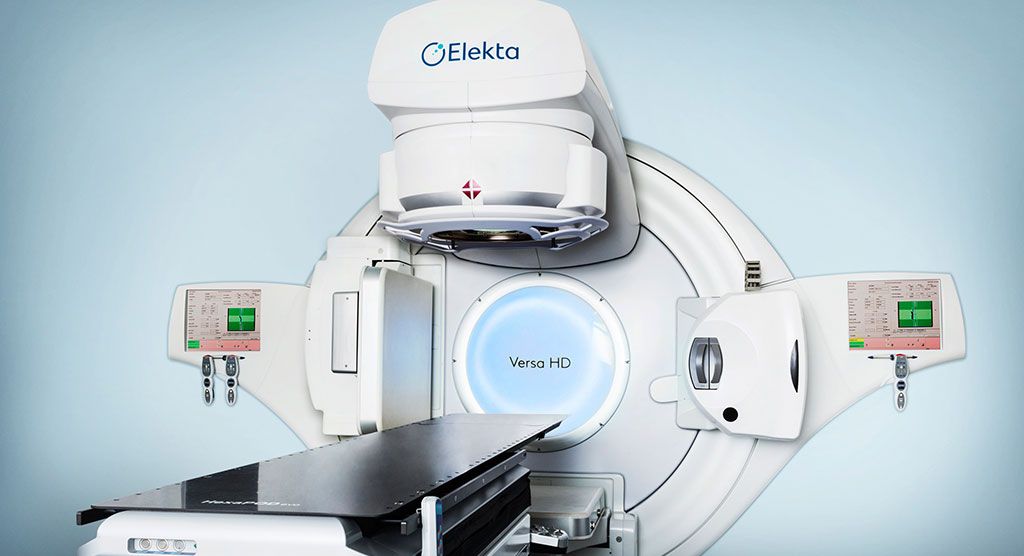Study shows end-to-end accuracy for high-definition dynamic radiosurgery

Technical study at Farrer Park Hospital (Singapore) demonstrates the suitability of Elekta’s Versa HD and Monaco for linac-based intracranial radiosurgery.

In a technical validation project, medical staff at Farrer Park Hospital (Singapore) showed that high precision radiotherapy solutions – including the treatment planning system and planning algorithms, advanced beam-shaping technology, and reliable image guidance and patient positioning – can help clinicians deliver accurate and efficient high-definition dynamic radiosurgery.
Details of the study can be found here.
The study, conducted by Farrer Park Hospital physicists Hooi Yin Lim and Lip Teck Chew, was designed to measure the end-to-end accuracy of the HDRS workflow to deliver a VMAT plan featuring a single isocenter and multiple brain metastases.
In addition to the PseudoPatient 3D gel phantom, 2D film analysis and ionization chamber (RTsafe, Athens, Greece), the study employed a wealth of Elekta technology, including:
- Monaco® treatment planning system (version 5.11.02)
- MOSAIQ® Oncology Information System (for record-and-verify)
- Versa HD™ linear accelerator (with Agility™ MLC)
- HexaPOD™ evo RT System
- Fraxion™ cranial immobilization system
- iBeam® evo Couchtop using the Fraxion Tabletop Adapter
The project methodology entailed the use of a multiple brain met data set acquired from an actual patient to serve as a model. Within the PseudoPatient head phantom, the six targets (6-25 mm diam.) were distributed throughout the brain to test the effects of rotation on localization accuracy. A seventh target near the brainstem was added for quality assurance (QA).
For planning, the isocenter was positioned at the centroid of the targets. The VMAT plan consisted of five non-coplanar arcs with a specification of 8 Gy to each of the six targets (peak dose < 12 Gy), and a homogenous dose of 8 Gy was planned for the QA target.

The CT data set was sent to MOSAIQ to imported to XVI to confirm the isocenter. The researchers set up the PseudoPatient phantom on the treatment table using Fraxion immobilization, including a thermoplastic mask that connected to the iBeam evo Couchtop using the Fraxion Linac Tabletop Adapter for two degrees of positioning freedom.
Following irradiation, the gel phantom was scanned on a 1.5 T MRI scanner and the images were fused with the CT data set and analyzed.
The results of the ionization chamber analysis indicated a measured dose of 8.594 Gy and a calculated dose of 8.816 Gy, yielding a difference of just 2.6 percent. On analyzing the film, the gamma pass rate was 96.52 percent. For the 3D gamma analysis passing rate criteria of 5 percent/2mm, the passing rate for all targets was greater than 96 percent.
“According to the investigators, the high degrees of end-to-end accuracy they found reflects the precision of the entire system…”
According to the investigators, the high degrees of end-to-end accuracy they found reflects the precision of the entire system, including Monaco HD modulation for steep dose gradients; dose calculation accuracy for multiple small lesions by virtue of planning system’s Monte Carlo dose calculation algorithm; extremely low leakage of the Agility MLC – in addition to its superb beam-shaping capabilities – and the excellent imaging and positioning technology of Versa HD, HexaPOD evo RT.
“In our opinion, the precision and capabilities of the major components along the beam line, such as the flattening filters, jaws and Agility MLC, as well as Monaco with the Monte Carlo algorithm, are extremely important for providing a safe and homogenous solution to cancer centers globally,” the researchers concluded.





